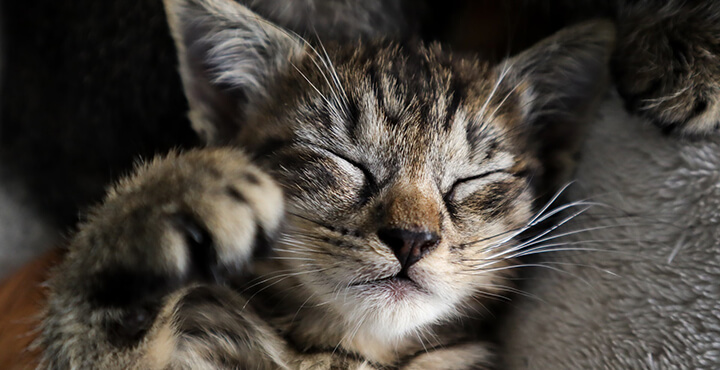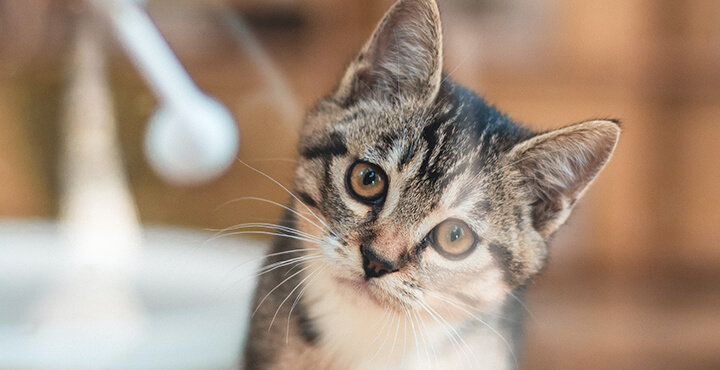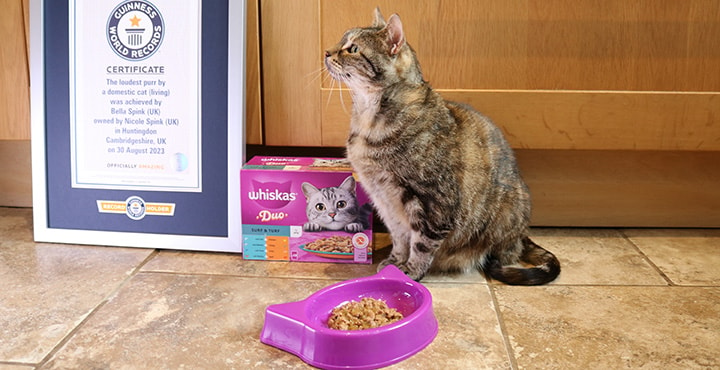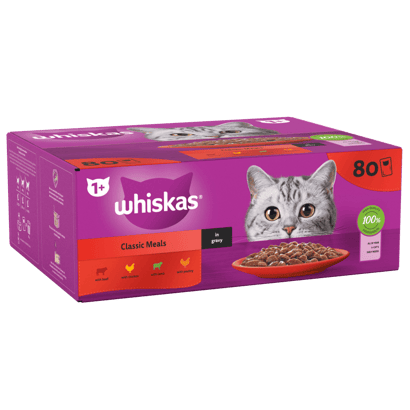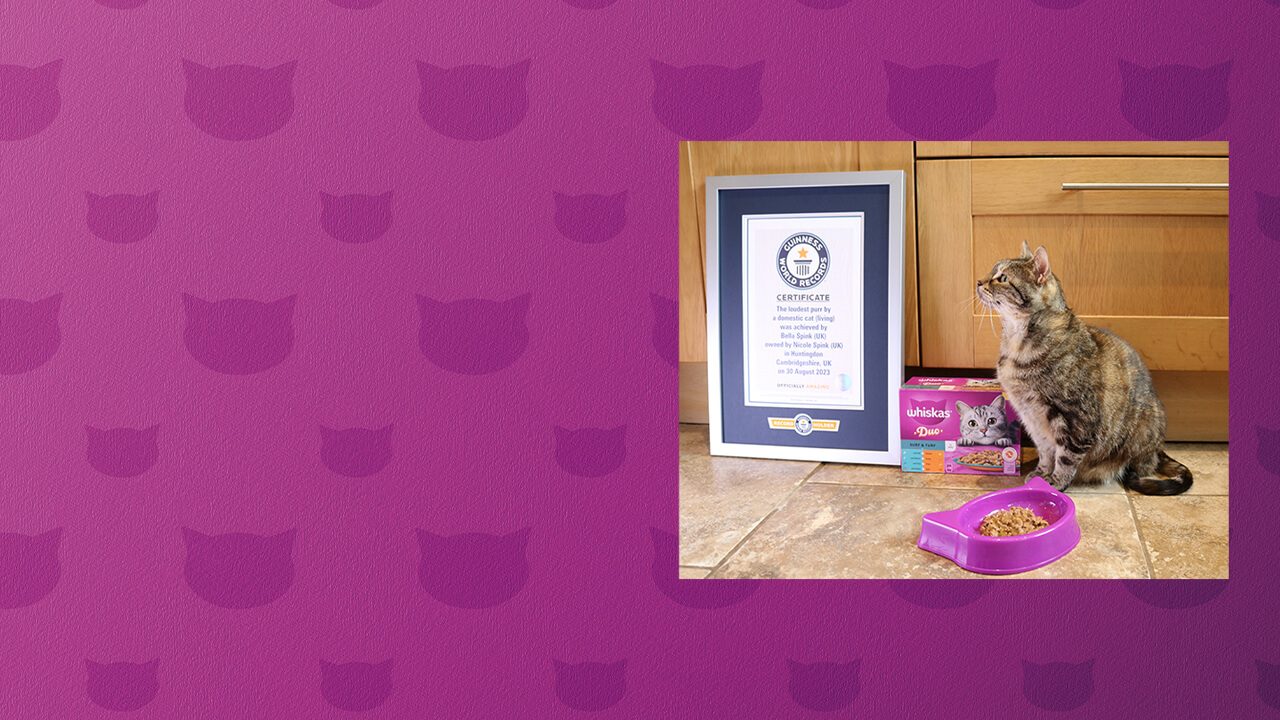
Many of us would say we have a fussy cat. Indeed, you could make an argument there’s no other sort! Our feline friends often have strong preferences on everything, from how they’re petted, to where they like their things and, of course, what they will and will not eat.
At WHISKAS®, we believe in celebrating that fussiness! It is, after all, part of what makes cats the unique creatures we love, and we believe that everyone deserves to be free to be themselves. That’s why we’ve taken a look at understanding what makes cats fussier than others and what we can do as owners to help keep them happy, including tips and advice on dealing with a finicky eater.
Understanding the fussy cat
Despite the fact cats are the most common pet in the UKI, there’s still an air of mystery surrounding them. We cat lovers can worship them, yes, but properly understanding them, well that’s a different matter!
We can, however, look at the things that cats tend to be fussy about. This is helpful because, while every cat is a unique individual, there are some common things they can be particular about. Knowing what these are helps us humans to get things ‘right’!
Smells
Cats have a very acute sense of smell. There are plenty of fragrances that we humans tend to like but our furry friends definitely do not. Citrus, rosemary and lavender (which is toxic to cats) to name but three. This means if you’re using a lemon-scented washing-up liquid to wash your cat’s bowl, you might well find they refuse to eat from it. Which leads us neatly to…
Food
What to feed a fussy cat is a common dilemma for pet parents and our feline friends are known for being, shall we say, discerning eaters! Every cat is unique and will have different preferences, but popular flavours include fish and poultry. Because all cats are different, WHISKAS® have developed a new range of delicious recipes, featuring different textures and flavours to cater to various preferences. So why not experiment to find your furry friend’s favourites?
Where you place their things
Another thing that cats tend to be particular about is where you place their food and water bowls, their litter tray and their bed. It’s best if food and water bowls are kept separate from each other and not near the litter tray. Some cats also prefer their food placed off the floor – like on a table or worktop – as they like to be able to see their surroundings when they eat. It’s best to avoid placing your cat’s resources in busy, high-traffic areas. It’s also worth noting that cats aren’t generally keen on sharing. If you have more than one pet, it’s often a good idea to give everyone their own things and to make sure they’re not ‘on top of’ each other. As cats are solitary hunters, a lot of them prefer to eat alone, even if they’re normally quite social.
Cleanliness
Cats tend to be fastidious (that’s why they spend so much of their day grooming themselves!). This means they expect their food bowls, litter trays and beds to be scrupulously clean or they won’t use them. It’s worth choosing your washing-up liquid or dishwasher powder carefully too – some have smells our feline friends find off-putting (citrus being a prime example) and others are toxic for cats.
Too much attention … but also not enough attention!
We all know that cats are generally considered quite independent. Having said that, as many cat owners will attest, there are plenty of cats who love snuggles and playtime. The trick is to find the balance that’s perfect for your furry friend because, of course, it needs to be on their terms!
How you pet them
You’re more likely to get purrs of approval if you pet your cat the right way. Obviously, your cat is an individual who will have their own likes and dislikes, but it’s worth knowing that a lot of cats are much happier if you rub their cheeks or behind their ears than if you give them a ‘full body’ stroke or touch their belly or tail. Be mindful of your cat’s body language and what they might be trying to tell you.
Change
One thing that often makes a cat seem finicky and out of sorts is change, whether that’s a house move or the arrival of a newborn or a new pet. Cats dislike change for the same sort of reasons as humans do – fear of the unknown and loss of control. A new pet or human in the household can also make your furry friend feel fearful and could encourage territorial behaviour. Introducing new pets and humans into the household gradually will help your cat adapt to change more comfortably.
Why are cats so picky with food?
A cat who is picky with their food will often be a worry to their owner. After all, we want our feline friends to have a nutrient-rich diet that will keep them healthy and happy.
There are lots of different reasons why a cat might be refusing their supper. Here are a few things to consider:
Know the difference between pickiness and a lack of appetite
If your cat suddenly becomes fussy or if they go for more than a day without eating or seem ‘off’ in any other way, it’s important you take them to the vet to rule out any medical issues.
Does your cat feel safe and comfortable where they eat?
However tempting the contents of the food bowl, a lot of cats won’t go near it if the bowl is placed in a noisy or high traffic area. They’ll be similarly unimpressed if their food is too near their litter tray or if their bowl is pushed into a corner or against a wall (they like to be able to see the surrounding area when eating). Many cats also prefer for their food and water bowls to be apart from each other. This is because in the wild cats often drink in a different location to the one they eat in and it reduces the risk of their water source becoming contaminated.
Is your cat having to share their eating space?
Another thing that might put a cat off is having their food too close to that of another pet. (All cats are unique, of course, and some will be even happy to share a bowl. This isn’t the norm though.)
Is your cat happy with their bowl?
Cats have very sensitive whiskers. They don’t like bowls that are too deep, because their whiskers rub against the sides. This is known as whisker fatigue. They also tend not to like plastic bowls which can give off a smell (plastic bowls can also harbour bacteria that can cause cat acne or scabs on their chin). Glass, metal or ceramic are therefore a safer choice.
Is your cat filling up elsewhere?
Sometimes a cat who isn’t eating their meals might already have a full tummy. That could be either because they’re an outdoor cat who has gobbled up the supper of a neighbour’s pet, or indeed their own catch of the day, or they may have eaten too many treats at home.
And, of course, ask yourself if they like the food!
It’s very possible, a picky cat just doesn’t like the food they’ve been given. After all, we all have meals we do and don’t enjoy. At WHISKAS®, we are all about Finding the purr in every cat – even the fussy ones! That’s why we’ve been working hard to develop delicious recipes that offer loads of different tastes and textures. It’s all about experimenting to find out which ones are your cat’s personal favourites. Do introduce new foods gradually though, serving a little of the new alongside food your cat is already accustomed to. This gives your cat’s digestive system – and indeed your cat! – a chance to get used to the change.
Is it a problem if my cat is fussy?
As long as you’ve ruled out any medical issues, it’s not really a problem if your cat is fussy. Every cat is unique and it’s all about loving them for who they are.
The key to this is getting to know your furry friend and discovering the things they do and don’t like, from their preferred meals to the games they enjoy to how they prefer to be petted.
How do you deal with cat fussiness about their food?
If your cat is, ahem, selective, about what they will or won’t eat, there are certain things it’s important to bear in mind.
Understand why your cat is being picky
Use the advice above to understand why your cat is refusing their dinner. Most importantly, you need to make sure that it is actually pickiness and not that your cat is unwell or has problems with their teeth (dental disease is common in cats). Once health concerns are ruled out, you can then start to tackle other easy fixes such as where your cat’s bowl is positioned.
Consider the age of your cat
As cats age, their sense of smell and taste declines, and this can adversely affect their appetite. This means, while it’s entirely possible to have a fussy kitten, pickiness does tend to be an issue that can increase with age.
Remember that cats have evolved to be ‘fussy’
In the wild, cats have evolved to be suspicious of new foods which may be toxic. They’re also fussy about their water sources (this explains why a lot of domestic cats prefer drinking from the tap).
There are also a few ‘tricks’ you can try:
Buy different food!
Okay, let’s start with the obvious. It could be that your cat is refusing their supper because their supper isn’t to their taste! After all, we all have our preferences. Try both offering different flavours - from salmon to chicken and beef, our new range covers all preferences - and textures: the new Tasty Mix, with its combination of proteins and vegetables, could be a good call. (Just remember that it’s important to go slowly when introducing a new food into your cat’s diet.)
Try feeding your cat little and often
In the wild, cats eat lots of small meals throughout the day. Now, obviously, it may not be very practical for you to give your cat lots and lots of tiny meals. You could try four small meals a day instead of two bigger ones though, or use an automated feeder or a food-dispensing toy.
Try warming their food
Many cats aren’t keen on their food being ‘fridge cold’. They prefer their meals at room temperature or even gently warmed – which resembles the body temperature of their prey. The latter releases enticing aromas (cats have a highly developed sense of smell). If you’re giving your cat wet food, a short spell in the microwave will do the trick. If you’re giving them dry food, simply add a little warm water. A study published in the Journal of Veterinary BehaviourII found that warming food made a significant difference to the amount that cats ate.
Make mealtimes more interesting
Some cats eat better when mealtimes are made more fun with something like a puzzle feeder. This utilises your furry friend’s hunting skills and provides great enrichment, which is especially important if they’re an indoor cat.
Looking to keep your very own fussy cat happy at mealtimes? Check out our new range of delicious recipes.



